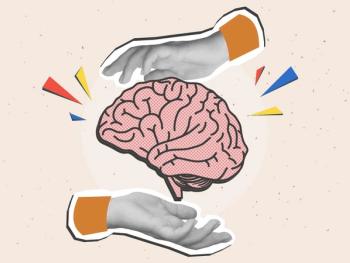
- Vol 32 No 4
- Volume 32
- Issue 4
An Update on Street and Club Drugs: What Clinicians Need to Know
A review of the pharmacological and symptomatic effects of various classes of designer drugs, including stimulants, hallucinogens, and sedatives.
[[{"type":"media","view_mode":"media_crop","fid":"34285","attributes":{"alt":"Update on street and club drugs","class":"media-image media-image-right","id":"media_crop_6563257794965","media_crop_h":"0","media_crop_image_style":"-1","media_crop_instance":"3647","media_crop_rotate":"0","media_crop_scale_h":"82","media_crop_scale_w":"125","media_crop_w":"0","media_crop_x":"0","media_crop_y":"0","style":"float: right;","title":" ","typeof":"foaf:Image"}}]]Designer drugs are increasingly attractive to consumers: they offer a legal loophole from controlled substance laws, they are largely undetectable in routine drug screening, and they are available online for lower cost than illegal substances. This article reviews the pharmacological and symptomatic effects of various classes of designer drugs, including stimulants, hallucinogens, and sedatives.
Stimulants
Stimulants block postsynaptic reuptake in neurotransmitters such as norepinephrine, serotonin, and dopamine; at the same time, stimulants increase the release of presynaptic neurotransmitters, especially dopamine. In addition to amphetamine-like euphoria, drugs of this class can produce anxiety, agitation, insomnia, psychotic features (including hallucinations), anorexia, and autonomic hyperactivity.
Piperazines. Piperazine was first introduced as an anthelmintic. Currently, piperazine and its derivatives, such as 1-benzylpiperazine (BZP) and 1-(3-trifluoromethyl-phenyl)piperazine (TFMPP) are sold in pill form as “herbal ecstasy.” Acute physical symptoms include migraines, diaphoresis, mydriasis, tremors, and hot or cold flashes. Case reports have described grand mal seizures with delayed onset of up to 8 hours after ingestion.1 Chronic sequelae include insomnia, fatigue, mood swings, confusion, and irritability.
Cathinones. Synthetic cathinones, or bath salts, are white or brown crystalline powder sold in small plastic or foil packages. They can be bought online or in drug paraphernalia stores under a variety of brand names, such as Ivory Wave, Bloom, Cloud Nine, and Scarface.2
Cathinones are chemically similar to amphetamines and include products such as methylenedioxypyrovalerone, methylone, and mephedrone. Acute effects of oral or insufflated cathinones are similar to those of psychostimulants, including psychiatric and physical stimulant effects such as mydriasis, bruxism, and diaphoresis. With long-term use, some persons can become dependent.
Hallucinogens
A chemically diverse class, hallucinogens can be grouped in multiple ways on the basis of their chemical structure. This class includes:
• Tryptamines (eg, LSD, psilocybin)
• Phenethylamines (eg, mescaline, the 2C family, the NBOMe series, the DO series, FLYs)
• MDMA dissociatives, such as ketamine and dextromethorphan
• Synthetic cannabinoids and salvia
Tryptamines. LSD and psilocybin act as partial agonists at the serotonin 2A, serotonin 2C, and serotonin 1A receptors. Acute psychological symptoms include perceptual alterations, synesthesia, depersonalization, altered mood and cognition, anxiety, dysphoria, and behavioral toxicity. Ingestion of LSD results in glutamate release as well as N-methyl-D-aspartate (NMDA) and dopamine receptor modulation. Hallucinogenic effects start 30 to 60 minutes after ingestion and last for 10 to 12 hours. Long-term sequelae include hallucinogen persisting perceptual disorder, a condition of persistent visual changes.
Hallucinogenic mushrooms contain psilocybin that is converted into the active compound psilocin, with potency at 1/100th that of LSD. In addition to its serotonergic effects, psilocin is a monoamine oxidase substrate. Acute physical effects of ingestion include mydriasis, tachycardia, nausea, hyperreflexia, and tremor.3 Potency can vary by species, origin, growing condition, harvest period, and the process of drying the mushrooms. In addition, mushrooms sold as hallucinogenic mushrooms may not contain psilocybin and may be commercial mushrooms laced with LSD or phencyclidine (PCP).4
Phenethylamines. A chemically diverse class of drugs, phenethylamines include agents with stimulant and hallucinogenic effects, such as hallucinations, illusions, and perceptual alterations. MDMA has both stimulant and hallucinogenic properties.
Mescaline is ingested in the form of the dried peyote known as buttons. It can also be orally consumed as 100 to 700 mg of the hydrochloride salt or the sulfate salt. The potency of the dried plant material can vary significantly depending on the species and manufacturing process. It binds primarily to the serotonin 2A and serotonin 2C receptors as a partial agonist. Physical symptoms include nausea, vomiting, mydriasis, tachycardia, hypertension, and headache.
Individual compounds of the 2C family may have agonist or antagonist activity at the serotonin 2 and α-adrenergic receptors. They can be ingested orally or can be insufflated. These compounds are often labeled as mescaline because of the similar effects, although they are less potent. In addition to hallucinogenic effects, severe psychiatric symptoms include aggression, psychomotor agitation, and agitated delirium. Physical symptoms include seizures, tachycardia, hypertension, acute kidney injury, diaphoresis, metabolic acidosis, rhabdomyolysis, acute hyperthermia, and sudden cardiopulmonary arrest.5
The 25-NBOMe series (“bombs”) of substances is related to the 2C family and can be insufflated or taken sublingually. The substances were originally developed as a research tool for serotonin 2A agonist receptor studies, and symptoms from ingestion are similar to those of the 2C compounds.
The psychedelic amphetamines include the DO series and the FLYs. Members of the DO series are par-tial agonists at the serotonin 2A, serotonin 2B, and serotonin 2C receptors, with symptoms that include hallucinogenic effects, agitation, seizures, and diaphoresis. These effects might last hours to days. The FLY compounds are consumed at amounts of 500 to 1000 μg as blotters and include 2C-B, 2C-B-FLY, and Bromo-DragonFLY. In addition to the serotonergic effects of the DO series, FLYs have glutamatergic and dopaminergic effects and modulate the NMDA receptor. The use of FLYs can result in limb ischemia due to peripheral vasoconstriction.
The MDMA Ecstasy is a phenylethylamine with stimulant-like effects. It is used recreationally at social and dance events for its aphrodisiac and socializing entactogenic properties, including symptoms of arousal, increased energy, talkativeness, and euphoria. Ecstasy induces a reversal in the direction of the serotonin reuptake channel, resulting in a rapid surge of serotonin levels.
Acute adverse effects include ataxia, bruxism, hyperthermia, rhabdomyolysis, and disseminated intravascular coagulation. MDMA increases vasopressin secretion, which can result in hyponatremia. Adulterating pills with other substances increases the potential for toxic sequelae. Some individuals have reported combining antidepressants such as fluoxetine in a theoretical effort to reduce serotonin depletion from long-term ingestion of MDMA. The adverse effects include an increased risk of hyperthermia and serotonin syndrome.6 Moreover, individuals may ingest agents falsely labeled as MDMA or contaminated with other drugs, resulting in death from serotonin syndrome.7
Acute treatment of MDMA overdose includes inducing sedation; cooling measures; and antispasticity agents, such as cyclobenzaprine. Long-term ingestion of MDMA results in depletion of serotonin and impaired inhibition, verbal memory impairment, visual and spatial performance impairment, and mood and anxiety disorders. Chronic physical effects include hepatotoxicity, myocardial damage, and valvular heart disease.
MDMA dissociatives. Ketamine and dextromethorphan act as noncompetitive antagonists at the NMDA receptor, inducing dissociative effects. Recreationally, ketamine is used to achieve the state of derealization, described as a near-birth experience. Onset is rapid and can include acute symptoms of panic, paranoia, hallucinations, confusion, delusions, delirium, or behavioral toxicity. Case reports have described acute physical sequelae of abdominal pain, referred to as “k cramps,” and lower urinary tract symptoms. Chronic physical sequelae include hydronephrosis, ureteral obstruction and papillary necrosis, hepatitis, and cholestasis. With long-term use, there is an up-regulation of D1 receptors in the dorsolateral prefrontal cortex, resulting in cognitive impairment, memory loss, and problems with attention, as well as induction of manic and psychotic episodes and depressive symptoms.8
Dextromethorphan is an unscheduled antitussive, absent of μ-opioid receptor affinity. Acute effects are dose-dependent and are described in several plateaus. The first plateau includes mild inebriation and stimulant-like effects. The second plateau presents similarly to alcohol intoxication with potential mild hallucinations. The third plateau is a state of altered consciousness, impaired senses, agitation, and psychosis. The fourth plateau consists of depersonalization and derealization. Physical symptoms include hypertension, tachycardia, diaphoresis, respiratory depression, and serotonin syndrome. With long-term use, individuals can develop a physical dependence to dextromethorphan, which is treated supportively.
Synthetic cannabinoids. Spice, K2, and Crazy Monkey are synthetic cannabinoids. The two known cannabinoid receptors are CB1 and CB2. These substances lack the cannabidiol found in cannabis, which has anticonvulsant properties. Onset of action can be rapid, with varying duration of effects (depending on agent) that can last for hours.
Relative to marijuana, synthetic cannabinoids produce more significant agitation/irritability and are more strongly associated with seizure activity. Moreover, acute psychiatric effects of synthetic cannabinoids can be more severe than those of cannabis. The most common psychiatric sequelae include agitation/irritability, drowsiness/lethargy, confusion, hallucinations, impaired coordination, sedation, catalepsy, psychomotor retardation, and (poten-tially) coma. Acute physical effects include hypothermia, hypertension, acute kidney injury, myocardial infarction, strokes, and seizures. Chronic withdrawal symptoms are similar to those seen with cannabis withdrawal, with a highly variable time-course based on the wide range of effect duration within this class.9
Salvia. The leaf form of salvia can be chewed or brewed in drinks or inhaled from pipes or water bongs. The onset of effect is less than a minute when inhaled, and the effect lasts 15 to 30 minutes. In addition to its hallucinogenic effects, acute symptoms include incapacitation, spatiotemporal dislocation, and agitated delirium. Post-trip symptoms include fatigue, dizziness, amnesia, and psychosis.
Sedatives
γ-Hydroxybutyric acid (GHB) is used recreationally and as an aphrodisiac at dance parties to induce symptoms of euphoria, relaxation, and disinhibition. Symptoms can progress to confusion, respiratory depression, and coma at higher amounts, and combining the agent with other respiratory depressants can increase its lethality, particularly because of its narrow therapeutic window. Investigations of sexual assault cases involving use of GHB can be complicated by the substance’s short half-life and the inability to test for the precursors 1,4-butanediol and γ-butyrolactone. The substance has dopaminergic and GABAergic effects.
GHB is typically taken in capful amounts of approximately 5 mL; however, the dosage concentration can vary substantially. The substance has an onset of action of approximately 15 minutes, with a duration of 3 to 4 hours. It is consumed as a supplement by body builders because studies have shown that the substance produces elevations in prolactin and growth hormone in vivo.10 With long-term ingestion of GHB or its precursors, prolonged, severe withdrawal symptoms, similar to alcohol or benzodiazepine withdrawal, can develop. Patients require sustained treatment, primarily with benzodiazepines and supportive care.
In the US, the leaf portion of the kratom tree (Mitragyna speciosa) is chewed or consumed as processed capsules. It has dopaminergic and serotonergic effects and is an agonist at the μ- and κ-opioid receptors, resulting in stimulant effects at lower dosages and opioid-like effects at higher dosages.
Onset of symptoms is 10 minutes, and duration is between 2 and 5 hours. Acute symptoms include euphoria, miosis, pruritus, agitation, constipation, nausea, vomiting, diarrhea, and seizures. Chronic symptoms include hyperpigmentation, urinary frequency, psychosis, and intrahepatic cholestasis.11 Withdrawal symptoms are similar to those of opioid, including cravings, anxiety, restlessness, diaphoresis, and pruritus. Treatment of withdrawal symptoms may include opioid substitution, antiemetics, benzodiazepines, and central α-agonists.
Summary
Beyond the commonly used drugs of abuse, clinicians may consider assessing for use of designer and lesser commonly identified recreational drugs. Patients with other identified substance use disorders may report concomitant use of these substances, many of which can result in chronic psychiatric and medical conditions as well as complicated withdrawal symptoms. Laboratory testing capabilities remain limited for these substances, and identification of use relies primarily on historical report. Street names for the described substances can be found at
Disclosures:
Dr Yen is a fellow of the UCLA Addiction Psychiatry Fellowship, and Dr Tsuang is Director of the Dual Diagnosis Treatment Program at the Harbor-UCLA Medical Center and Clinical Professor of Psychiatry at the David Geffen School of Medicine at UCLA. The authors report no conflicts of interest concerning the subject matter of this article.
References:
1. Wood DM, Dargan PI, Button J, et al. Collapse, reported seizure-and an unexpected pill. Lancet. 2007;369:1490.
2. National Institute on Drug Abuse. DrugFacts: Synthetic cathinones (“bath salts”). http://www.drugabuse.gov/publications/drugfacts/synthetic-cathinones-bath-salts. Accessed March 9, 2015.
3. Passie T Seifert J, Schneider U, Emrich HM. The pharmacology of psilocybin. Addict Biol. 2002;7:357-364.
4. Renfroe CL, Messinger TA. Street drug analysis: an eleven year perspective on illicit drug alteration. Semin Adolesc Med. 1985;1:247-257.
5. Musselman ME, Hampton JP. “Not for human consumption”: a review of emerging designer drugs. Pharmacotherapy. 2014;34:745-757.
6. Green AR, Mechan AO, Elliott JM, et al. The pharmacology and clinical pharmacology of 3,4-methylenedioxymethamphetamine (MDMA, “ecstasy”). Pharmacol Rev. 2003;55:463-508.
7. Ling LH, Marchant C, Buckley NA, et al. Poisoning with the recreational drug paramethoxyamphetamine (“death”). Med J Aust. 2001;174:453-455.
8. Kalsi SS, Wood DM, Dargan PI. The epidemiology and patterns of acute and chronic toxicity associated with recreational ketamine use. Emerging Health Threats J. 2011. http://www.readcube.com/articles/10.3402%2Fehtj.v4i0.7107. Accessed March 9, 2015.
9. Zimmermann US, Winkelmann PR, Pilhatsch M, et al. Withdrawal phenomena and dependence syndrome after the consumption of “spice gold.” Dtsch Arztebl Int. 2009;106:464-467.
10. Volpi R, Chiodera P, Caffarra P, et al. Muscarinic cholinergic mediation of the GH response to gamma-hydroxybutyric acid: neuroendocrine evidence in normal and parkinsonian subjects. Psychoneuroendocrinology. 2000;25:179-185.
11. Kapp FG, Maurer HH, Auwärter V, et al. Intrahepatic cholestasis following abuse of powdered kratom (Mitragyna speciosa). J Med Toxicol. 2011;7:227-231.
Articles in this issue
over 10 years ago
Introduction: The State of Addiction Psychiatryover 10 years ago
Opioid Use Disorder: Update on Diagnosis and Treatmentover 10 years ago
A Brief Review of Gambling Disorder and Five Related Case Vignettesover 10 years ago
Video Games: Recreation or Addiction?over 10 years ago
The Hoarding of Animals: An Updateover 10 years ago
Reflecting on the Spiritual Manover 10 years ago
Still Aliceover 10 years ago
Prescribing Opioid Analgesics: Are We Going in the Right Direction?Newsletter
Receive trusted psychiatric news, expert analysis, and clinical insights — subscribe today to support your practice and your patients.















